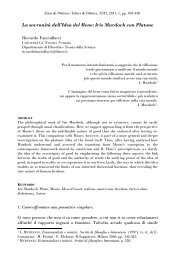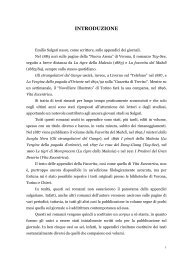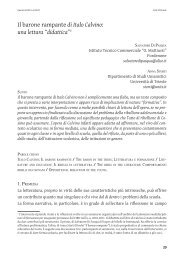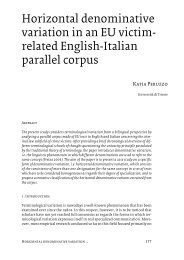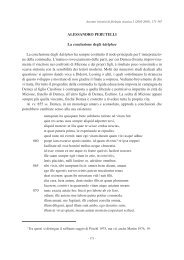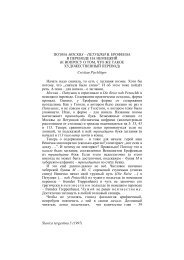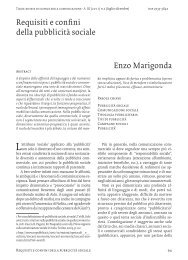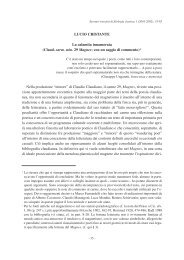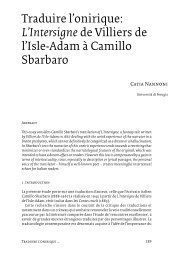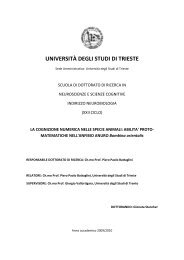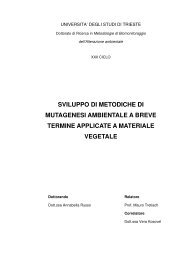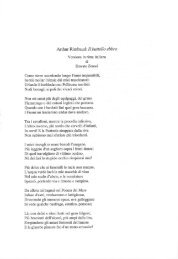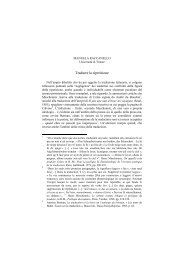UNIVERSITÀ DEGLI STUDI DI TRIESTE - OpenstarTs - Università ...
UNIVERSITÀ DEGLI STUDI DI TRIESTE - OpenstarTs - Università ...
UNIVERSITÀ DEGLI STUDI DI TRIESTE - OpenstarTs - Università ...
You also want an ePaper? Increase the reach of your titles
YUMPU automatically turns print PDFs into web optimized ePapers that Google loves.
Chapter 6 – High Frequency Percussive Ventilator characterization<br />
point demarks a switch from an initial model in which inhaling is induced to a second model<br />
in which exhalation occurs freely. The two models are different each other about the estimate<br />
of inhaled and exhaled resistance; in this way, it is possible to obtain a significant adaptation<br />
to the experimental data, without loss of accuracy in parameters estimate [Barbini P. et al<br />
2001]. We will not consider the second model, concerning the expiratory phase, because<br />
clinical parameters of our interest are mainly related to the inspiratory phase. A second<br />
operation concerns the estimation of resistance and elastance values by using the method<br />
previously described applied on data acquired during the inspiratory period of the analyzed<br />
respiratory cycle. Such values are updated every respiratory cycle and utilized to construct the<br />
pressure curve generated by the model using the measured flow as input. This estimated<br />
pressure curve is compared to the corresponding measured pressure curve in order to verify<br />
the validity of the model. The mean square error is used to measure the differences between<br />
measured and modelled pressures. This procedure runs during the expiratory phase,<br />
visualizing the estimated curve superimposed to the measured one in the inhalation phase.<br />
The operations are repeated for each respiration cycle.<br />
The figure 6.2 shows the ANSI-C implementation of described algorithm.<br />
73



